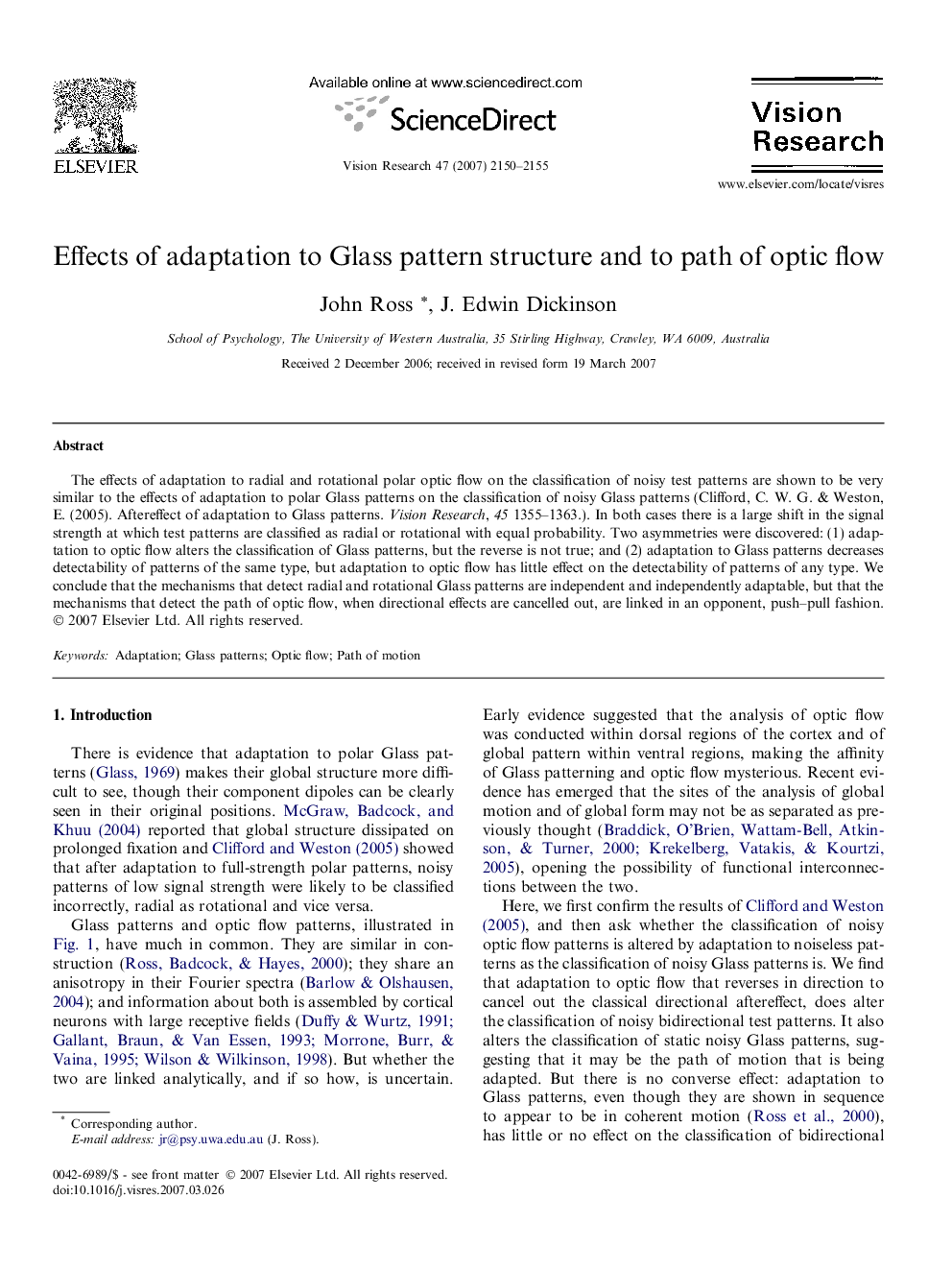| Article ID | Journal | Published Year | Pages | File Type |
|---|---|---|---|---|
| 4035539 | Vision Research | 2007 | 6 Pages |
Abstract
The effects of adaptation to radial and rotational polar optic flow on the classification of noisy test patterns are shown to be very similar to the effects of adaptation to polar Glass patterns on the classification of noisy Glass patterns (Clifford, C. W. G. & Weston, E. (2005). Aftereffect of adaptation to Glass patterns. Vision Research, 45 1355-1363.). In both cases there is a large shift in the signal strength at which test patterns are classified as radial or rotational with equal probability. Two asymmetries were discovered: (1) adaptation to optic flow alters the classification of Glass patterns, but the reverse is not true; and (2) adaptation to Glass patterns decreases detectability of patterns of the same type, but adaptation to optic flow has little effect on the detectability of patterns of any type. We conclude that the mechanisms that detect radial and rotational Glass patterns are independent and independently adaptable, but that the mechanisms that detect the path of optic flow, when directional effects are cancelled out, are linked in an opponent, push-pull fashion.
Keywords
Related Topics
Life Sciences
Neuroscience
Sensory Systems
Authors
John Ross, J. Edwin Dickinson,
